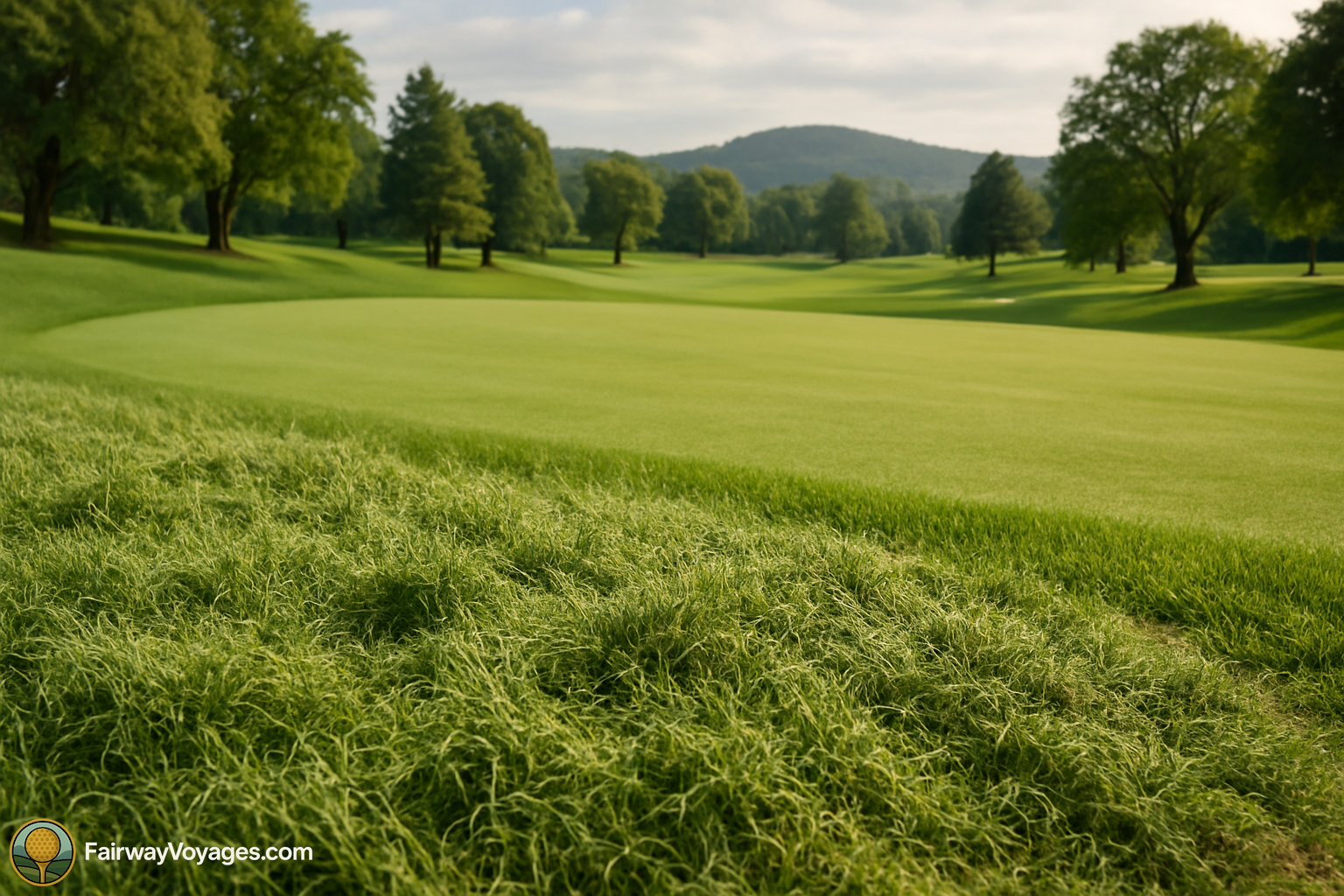Poa Annua and Its Role in Modern Golf Course Management
Poa annua, commonly referred to as annual bluegrass, is one of the most widespread and controversial turfgrass species used on golf courses worldwide. It is a cool-season grass that thrives in temperate climates and has the unique ability to germinate and establish quickly under various environmental conditions. Despite being considered a weed in many turf management contexts, poa annua has become an integral part of playing surfaces on numerous prestigious golf courses. Its fine texture and ability to create a dense, uniform putting surface make it a preferred choice for greens in several regions, especially in parts of North America and Europe.
Poa annua exhibits a high level of genetic variability, which contributes to its resilience and adaptability. This species can be divided into two main biotypes: annual and perennial, although the perennial type is more desirable for golf course applications due to its longer lifespan and improved stress tolerance. The grass is known for its prolific seed production, even when mowed short, which leads to challenges in maintaining uniformity across playing surfaces. Turf managers must implement meticulous cultural practices to mitigate the visible seedhead production that can disrupt ball roll on greens.
Historical Context and Global Use
The use of poa annua on golf courses dates back to the early 20th century, with its accidental establishment on many greens initially viewed as a problem. Over time, however, certain strains of poa annua were found to perform well under the specific mowing and environmental conditions of golf courses. Today, it is the dominant species on several elite courses, including those that host major championships. In the Pacific Northwest of the United States and coastal California, poa annua has become the grass of choice due to its ability to withstand cool, moist climates while maintaining a smooth putting surface throughout much of the year.
In regions such as the United Kingdom and parts of Canada, poa annua thrives naturally and often coexists with other cool-season grasses like bentgrass. In some cases, its persistence has led to its intentional cultivation. Golf course superintendents in these regions have developed management programs tailored to poa's unique needs, capitalizing on its performance characteristics while minimizing its weaknesses. These programs include careful irrigation scheduling, frequent mowing, and the use of plant growth regulators to maintain consistent playing conditions. Despite its reputation as a weed, the species' ubiquity and performance have led many facilities to embrace it as a primary turfgrass.

Challenges Associated with Poa Annua
One of the most significant challenges in managing poa annua is its sensitivity to heat and drought stress. As a cool-season grass, it struggles during the hot summer months in many regions, which can lead to thinning turf, disease outbreaks, and inconsistent playing conditions. To mitigate these risks, turf managers often employ syringing techniques, apply fungicides to combat summer diseases like anthracnose, and utilize specialized fertility programs to support the grass during periods of stress. These efforts can increase maintenance costs and require a higher level of expertise compared to other turfgrass species.
Another complication arises from poa annua's prolific seedhead production. The seedheads, which are typically visible in the spring, can negatively affect the smoothness of putting surfaces and result in slower ball roll speeds. Superintendents address this issue through the use of plant growth regulators such as trinexapac-ethyl and mefluidide, which suppress seedhead formation. In addition, verticutting and topdressing are employed to maintain a consistent surface texture. Even with these practices, managing poa annua for optimal performance remains a labor-intensive task that demands careful planning and execution.

Research and Breeding Advances
Recent advancements in turfgrass breeding have focused on developing improved poa annua cultivars with enhanced stress tolerance and reduced seedhead production. Researchers are exploring genetic pathways that contribute to the perennial nature of certain biotypes, aiming to create varieties that are more durable and better suited for long-term use on greens and fairways. These efforts have led to the commercial release of improved poa annua cultivars that offer greater uniformity, disease resistance, and compatibility with modern management practices. Although adoption has been gradual, these cultivars present promising alternatives to traditional selections.
Genomic studies have also shed light on the complex nature of poa annua's variability. The species is a facultative annual, meaning it can behave as either an annual or a perennial depending on environmental conditions and genetic makeup. This plasticity makes it both a valuable and unpredictable component of turfgrass systems. Ongoing research continues to focus on identifying molecular markers for desirable traits such as root depth, summer performance, and resistance to pathogens like dollar spot and anthracnose. These studies not only improve breeding programs but also enhance our understanding of poa annua's role in sustainable turf management.
Environmental Considerations and Sustainability
While poa annua's water and nutrient requirements can be high, sustainable management strategies are helping to reduce its environmental impact. Integrated pest management (IPM) approaches, precision irrigation systems, and soil moisture monitoring tools have enabled turf professionals to make more informed decisions. By applying inputs only when necessary, superintendents can lower resource use and minimize chemical runoff, aligning with modern expectations for environmental stewardship on golf courses. Moreover, the increased use of organic fertilizers and compost amendments is helping to improve soil health and reduce reliance on synthetic chemicals.
Climate change may further influence the viability of poa annua as a golf course grass. Rising temperatures and shifting precipitation patterns could pose new challenges for maintaining high-quality playing surfaces in regions where the species is currently dominant. In anticipation of these changes, some facilities are considering gradual transitions to more heat-tolerant species or hybrids that include poa annua as a component. These proactive measures reflect the turf industry's ongoing commitment to sustainability and performance under evolving environmental conditions. The future of poa annua will depend on the ability to balance its strengths with adaptive, resource-efficient management practices.
